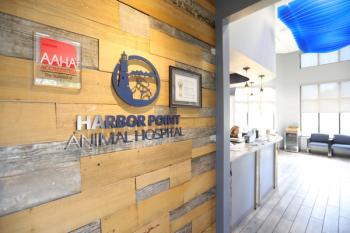
Preventive health guidelines aim to spur client communication, boost practice visits
National Report - New preventive health guidelines for dogs and cats were recently unleashed by the American Veterinary Medical Association (AVMA) and the American Animal Hospital Association (AAHA).
NATIONAL REPORT— New preventive health guidelines for dogs and cats were recently unleashed by the American Veterinary Medical Association (AVMA) and American Animal Hospital Association (AAHA).
The AAHA-AVMA Canine Preventive Healthcare Guidelines were crafted to help veterinarians facilitate a complete discussion about preventive care with clients. The report follows national survey findings documenting a drop in client visits. At the same time, an increase in some preventable diseases in pets were noted in a recent State of Pet Health report from Banfield Pet Hospitals examining some 2.1 million dog and 450,000 cat records.
"We're seeing some evidence in some data sets of increasing disease prevalence, and these diseases are the kind of things that are very easily prevented," adds Dr. Michael R. Moyer, AAHA president. "We know that we have tremendous value to offer our patients, but we have more to do as a profession to communicate that value, the importance of those preventive care visits and what we do during these visits, to pet owners."
"The guidelines are extremely important because we know that fewer and fewer pet owners are bringing their cats and dogs in for regular preventive care," says AVMA President Dr. René A. Carlson. "Regular visits are essential in preventing health problems such as ear infections, dental disease and obesity," she adds.
In fact, surveys are showing that a decline in visits to veterinary hospitals has been caused by lack of consumer awareness about the need for veterinary care, proliferation of self-help care from Internet sources and difficulties in transporting cats to the veterinary hospital.
The task force, sponsored by the Partnership for Preventive Pet Healthcare (a consortium of national veterinary groups and animal health manufacturers), was charged with crafting a comprehensive set of guidelines that could be adapted by veterinarians based on factors like life stage, patient needs, risk assessments and newly emerging information.
An overarching goal is to give veterinarians a new tool to help facilitate and engage clients in education about preventive care.
The guidelines call for annual exams, annual heartworm testing, annual internal parasite testing, retrovirus testing for cats (in accordance with existing guidelines), year-round broad-spectrum parasite control against heartworms, intestinal parasites and fleas; immunizations (in accordance with existing guidelines) and a follow-up plan for the next visit.
"Instead of visiting a veterinarian only occasionally or as a secondary or final recourse, dog and cat owners who subscribe to the concept of preventive healthcare become regular users of veterinary services throughout their pets' lifetime. This shift in client behavior can be especially important for reversing the current underutilization of veterinary services, particularly by cat owners."
The guidelines also detail elements of a health evaluation using the SOAP (Subjective, Objective, Assessment, Plan) model, calling for a thorough history and a comprehensive physical examination including dental assessment, pain assessment, and body and muscle-conditioning scoring.
On the basis of the history and physical examination, veterinarians should assess the animal for medical conditions, infectious and zoonotic diseases, parasite prevention and control, dental care, genetic, breed and age considerations, behavior and nutrition, according to the guidelines.
They were also created to help practitioners customize the plan based on diagnostic test results, early disease screening tests and genetic testing.
Task force members included: Drs. Nan Boss, Steve Holmstrom, Amy Hoyumpa Vogt, Leonard Jonas, Michael Moyer, Michael Paul, Ilona Rodan, Link V. Welborn; and veterinary technician Eliza Krauter.
The AAHA-AVMA Canine Preventive Healthcare Guidelines were crafted to be comprehensive yet not too prescriptive.
Newsletter
From exam room tips to practice management insights, get trusted veterinary news delivered straight to your inbox—subscribe to dvm360.





